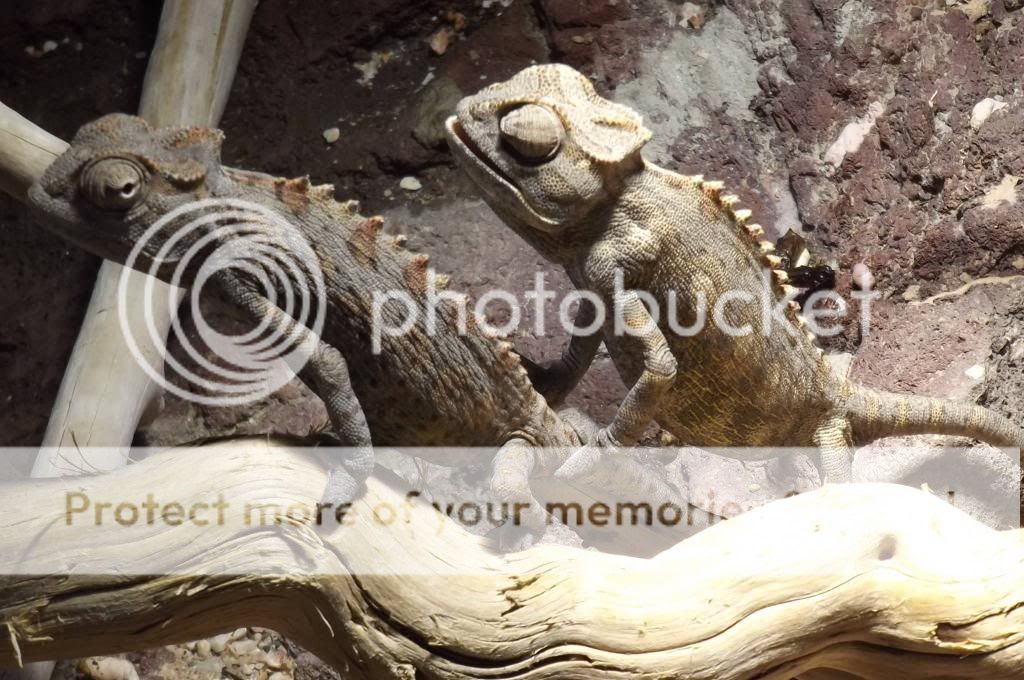TCMontium
Avid Member
Any people working with these great species or are interested in working with them?
Jurgen
I am interested in.
Follow along with the video below to see how to install our site as a web app on your home screen.
Note: This feature may not be available in some browsers.
Any people working with these great species or are interested in working with them?
Jurgen
Obviously these animals are from the Trioceros rudis group of the Trioceros bitaeniatus species complex. This group is generally restricted to montane forests and in Tanzania these animals had previously been grouped together as Trioceros sternfeldi (Trioceros rudis sternfeldi before that), with populations found in a variety of remnant montane forests in the northeastern part of the country. The population from the furthest southwest of these remnant montane forests (Mount Hanang) was described in 2010 as a distinct species (Trioceros hanangensis), while specimens from populations at Mount Meru, Mount Kilimanjaro, Mount Kenya and the Ngorongoro Crater were all left as T. sternfeldi.
In this description it is presumed based on color and pattern that T. hanangensis is most closely related to T. sternfeldi populations from the Ngorongoro Crater to its north (together these formed the western most populations of what was T. sternfeldi). It was also speculated that in the past there was likely continuous forest between these two remnant populations allowing for gene flow. A similar pattern of close relation had already been shown for Kinyongia uthmoelleri populations from Mount Hanang and the Ngorongoro Crater based on morphology and genetic data, so this seemed logical.
Interestingly, while T. sternfeldi specimens from Mount Meru, Mount Kilimanjaro and Mount Kenya were all used in the study to describe T. hanangensis, T. sternfeldi specimens from the Ngorongoro Crater were not included, despite specimens from the Ngorongoro Crater being grouped with T. sternfeldi in the description. Additionally, it has since been determined that additional remnant forests between Mount Hanang and the Ngorongoro Crater on the Mbulu Plateau (the Nou Forest) have not only K. uthmoelleri, but also chameleons that are clearly similar to T. hanangensis and Ngorongoro Crater T. sternfeldi. To the best of my knowledge it has not been determined if additional remnant forests between Mount Hanang and the Ngorongoro Crater (Marang Forest and Ufiome Forest) also have populations of these taxa, but it would not be surprising to find that they do.
So, what I'm trying to say is that these animals (both the ones in this import and the Jeweled/Red Rudis) come from somewhere along this Mount Hanang to Ngorongoro Crater corridor, and may even come from one of those two localities themselves. Conversations I have had with various researchers have suggested that the Jeweled/Red Rudis are from the Mbulu Plateau, which includes the Nou Forest. As far as what to call them, I too have worked with this taxa and I have fallen back on "Trioceros cf. sternfeldi" or "Trioceros cf. hanangensis" (indicating that it is a taxa closely related to sternfeldi or hanangensis, respectively, but that you are not sure if it is different). The specimens do, however, in general appear more similar to the description of T. hanangensis than T. sternfeldi, so Trioceros cf. hanangensis is probably more accurate.
Chris
I just love this thread! It's one of my favorite on the forums. I so enjoy looking at all the really nice photos of such gorgeous and rare species that I will probably never see in real life. Thank you so much for sharing them here on
the forums.
Just wanted to thank you for maintaining this very excellent thread of photos and species info for the past 2 years.
I spent all day enjoying it

Thank you for sharing
I love the yellow between the scales.
Are these the African desert cham, not arboreal?
Interesting species.
How long did the eggs incubate?